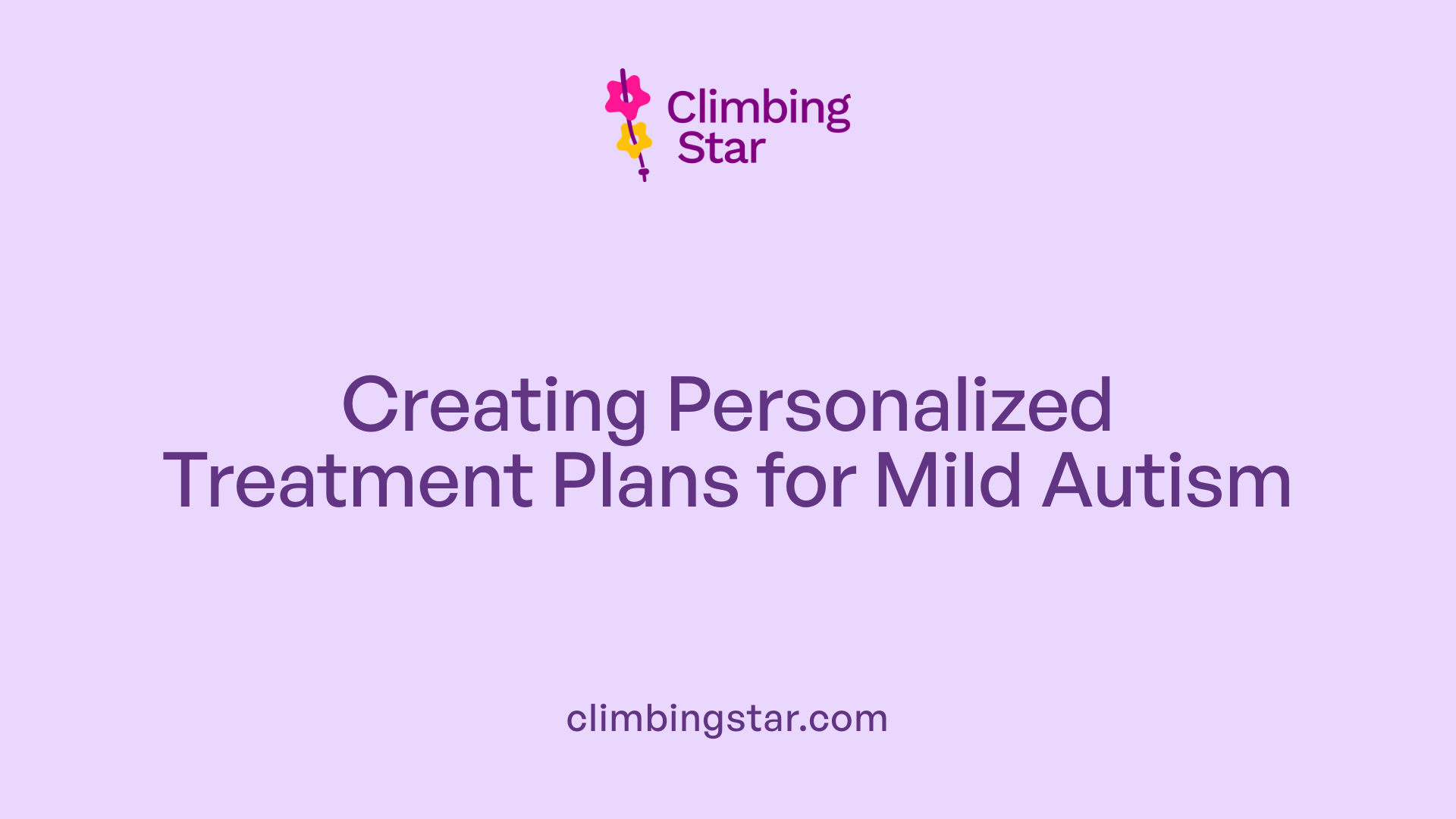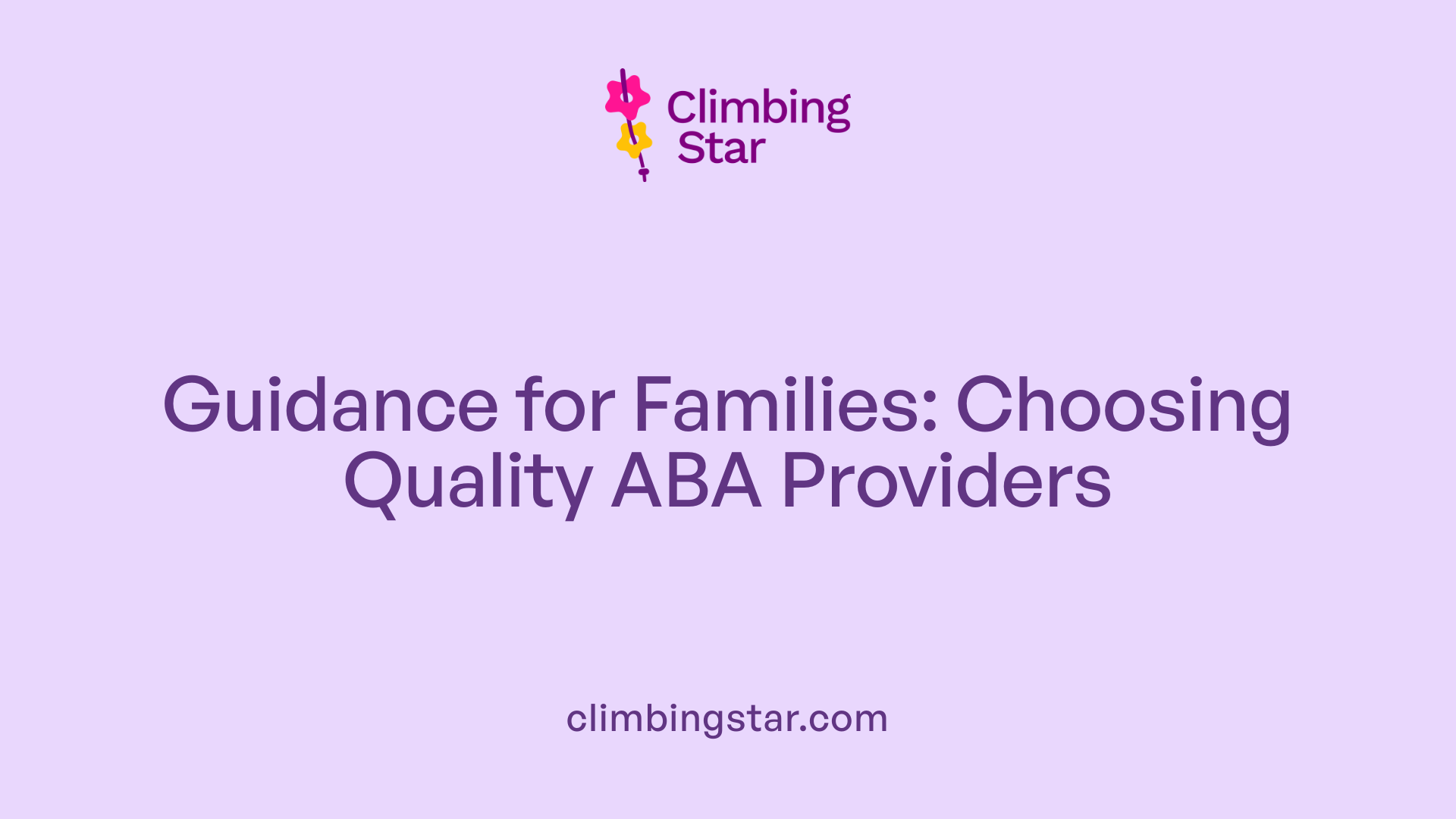Introduction to Mild Autism and Behavioral Therapies
Mild autism, often referred to as Level 1 autism, presents distinct challenges in social communication and behavior that, while less severe than other levels, require specialized support to enable daily functioning and personal growth. This article explores the key elements of autism spectrum disorder at the mild level, focusing on evidence-based behavioral therapies such as Applied Behavior Analysis (ABA) that provide structured and customized interventions. We will also discuss the roles of professional teams involved in therapy and the importance of early, tailored treatment plans to improve outcomes and enhance quality of life.
What is Mild Autism? Characteristics and Challenges

Definition of Level 1 Autism
Level 1 autism, commonly referred to as mild autism, represents the mildest form on the autism spectrum. It is characterized by noticeable difficulties in social communication and interaction, yet individuals typically require less intensive support compared to other levels. Despite this, these challenges can significantly impact daily life.
Common Symptoms and Behaviors
People with Level 1 autism often have trouble interpreting social cues such as facial expressions and body language. They may find it challenging to make and maintain friendships due to these social communication difficulties.
Social Communication Difficulties
Difficulties in social communication include limited eye contact, trouble understanding others' perspectives, and challenges in initiating or sustaining conversations. These communication hurdles often contribute to social isolation or misunderstandings in various settings.
Repetitive Behaviors and Routines
Repetitive behaviors are common and can include hand-flapping, rocking, or adhering to strict routines. These behaviors often provide comfort and predictability but might also interfere with flexibility in daily activities.
Parents and caregivers are encouraged to seek tailored early intervention therapies to improve social skills, communication, and adaptive behaviors, thereby enhancing quality of life and social integration for individuals with mild autism.
Applied Behavior Analysis (ABA) Therapy: Foundations and Approach

What is applied behavior analysis (ABA) therapy and how is it used to support individuals with autism?
Applied Behavior Analysis (ABA) therapy is a scientifically validated approach that focuses on understanding how behaviors work, how the environment influences them, and how learning happens. It is widely used to support individuals with autism by increasing helpful behaviors—like communication, social skills, attention, and self-care—and decreasing harmful or disruptive ones.
The A-B-C model of behavior analysis
ABA examines three parts of behavior: Antecedents (events before a behavior), Behavior itself, and Consequences (what follows the behavior). This A-B-C model helps therapists understand why a behavior occurs and how to shape it.
Positive reinforcement
One primary ABA strategy is positive reinforcement, where a valuable reward immediately follows a desired behavior, encouraging that behavior to happen more often. Examples include praise, tokens, or favorite activities given after a child successfully communicates or completes a task.
Individualized treatment plans
Each ABA program is tailored by a Board Certified Behavior Analyst (BCBA) who assesses the individual's skills, preferences, and needs. They set clear, measurable goals across areas like communication, social interaction, play, and academics, breaking these into small, teachable steps. Progress is closely tracked with data collection to adjust methods as needed.
Different ABA methodologies: Discrete Trial Training (DTT) and Pivotal Response Treatment (PRT)
ABA includes several teaching styles. Discrete Trial Training (DTT) involves structured, step-by-step instructions coupled with rewards for correct responses, usually in controlled settings. In contrast, Pivotal Response Treatment (PRT) is play-based and occurs in natural settings, targeting pivotal skills such as motivation and initiating communication to enhance broader social and academic abilities. Both methods, along with other naturalistic approaches, offer versatile ways to promote learning and independence.
Overall, ABA therapy uses evidence-based techniques to provide individualized and adaptable support, helping children with autism develop skills necessary for daily living and social success.
Professional Teams Delivering Behavioral Therapy for Autism

Who Are the Professionals Typically Involved in Providing Behavioral Analysis Therapy for Autism?
Behavioral therapy for autism, particularly Applied Behavior Analysis (ABA), is delivered by a team of trained professionals dedicated to improving the individual's skills and behaviors.
Roles of BCBAs and Licensed Therapists
Board-certified behavior analysts (BCBAs) are the primary specialists who design, oversee, and customize ABA programs. They assess each individual's unique needs, set treatment goals, and regularly monitor progress through systematic data collection. Licensed therapists and registered behavior technicians (RBTs) often implement daily intervention sessions under the guidance of BCBAs. These professionals ensure that ABA principles such as positive reinforcement and the A-B-C behavioral analysis model are systematically applied.
Speech-Language Pathologists and Occupational Therapists
Beyond ABA specialists, speech-language pathologists focus on improving communication and language development, which are often targets of therapy. Occupational therapists assist with everyday skills like dressing, eating, and managing sensory challenges. They may incorporate physical therapy and sensory integration techniques to support independence and enhance social participation.
Multidisciplinary Collaboration
A successful behavioral therapy program for autism depends on collaboration across disciplines. BCBAs, speech therapists, occupational therapists, psychologists, educators, and family members work together to provide comprehensive care. This team approach ensures that interventions are holistic, addressing behavior, communication, social skills, and daily living needs.
Settings of Therapy Delivery
ABA and related therapies are flexible and can be provided in multiple environments to best suit each individual's needs. Common settings include the home, school, clinics, and community spaces. Delivering therapy in natural environments helps generalize learned skills across contexts. Parents and caregivers are often trained by professionals to carry over techniques throughout daily routines, strengthening consistency and effectiveness.
Developing Customized Treatment Plans for Mild Autism

How are initial assessments and evaluations conducted?
Companies specializing in autism therapy begin by conducting thorough initial assessments. These include behavioral observations, parent interviews, and standardized diagnostic tools to understand the individual's strengths and challenges. This comprehensive evaluation helps identify specific areas such as communication deficits, social interaction difficulties, and daily living skills that require targeted intervention.
How are measurable goals set in treatment plans?
After the initial evaluation, measurable and specific goals are established. These goals often focus on improving communication, social skills, self-care, and reducing disruptive behaviors. Each objective is broken down into small, teachable steps to monitor progress effectively. For example, a goal may be to increase spontaneous communication by initiating greetings in three different settings.
What role do parents and caregivers play in the therapy process?
Parental and caregiver involvement is vital. Therapists provide training to families, enabling them to apply behavioral strategies during daily routines. This consistent implementation across environments helps reinforce learning and promotes generalization of skills. Additionally, caregivers are active partners in goal-setting and progress discussions, ensuring the approach aligns with the child’s natural environment.
How is data collection and progress monitoring used?
A key feature of these plans is systematic data collection. Therapists frequently record how often targeted behaviors occur and the child’s response to interventions. This ongoing measurement allows for real-time adjustments to the therapy plan. For instance, if a strategy isn't producing expected improvements, the treatment may be modified to better suit the child’s needs.
How are strategies tailored to individual needs?
Treatment plans are highly individualized. They incorporate methods like Applied Behavior Analysis (ABA), including discrete trial training and pivotal response training, based on what best suits the child’s learning style and developmental level. The plan may also integrate speech therapy, occupational therapy, or social skills training depending on the child's unique profile. By customizing interventions, therapy becomes more effective and engaging.
| Step in Customizing Treatment | Description | Purpose |
|---|---|---|
| Initial Assessment | Behavioral observations and interviews | Identify strengths and challenges |
| Goal Setting | Specific, measurable objectives | Target skill improvement |
| Family Involvement | Parent training and collaboration | Consistent skill reinforcement |
| Data Monitoring | Systematic behavior tracking | Inform treatment adjustments |
| Tailored Strategies | Use of ABA, speech, occupational therapy | Address individual needs |
Evidence Supporting ABA and Other Behavioral Therapies' Effectiveness
What evidence supports the effectiveness of behavioral analysis therapy in improving outcomes for individuals with autism?
Applied Behavior Analysis (ABA) is widely recognized as the most evidence-supported behavioral therapy for autism spectrum disorder (ASD). Research, including numerous meta-analyses, shows ABA can significantly improve communication, social skills, adaptive behaviors, and cognitive functioning in autistic individuals.
How does ABA impact communication and social skills?
ABA focuses on encouraging positive behaviors such as language use and social interaction while discouraging disruptive behaviors. Therapies like discrete trial training (DTT) offer step-by-step instruction with rewards, and pivotal response training (PRT) targets pivotal skills such as initiating communication in natural settings. These methods help enhance social engagement and communication abilities vital for day-to-day functioning.
Why is early intervention important in ABA therapy?
Early and intensive ABA interventions, especially when begun in early childhood, can reduce the severity of autism symptoms and support better social integration. Programs like the Early Start Denver Model combine play and social exchanges to foster emotional, cognitive, and language development for children aged 1–4 years. Early intervention maximizes developmental gains by addressing challenges before they become deeply entrenched.
How does implementation affect therapy outcomes?
Outcomes vary based on how ABA is implemented—factors like intervention intensity, therapist expertise, and family involvement play crucial roles. Effective programs are customized by certified behavior analysts who set individualized goals and track progress through systematic data collection. Training caregivers to support consistent therapy outside sessions enhances the generalization of skills.
Overall, ABA therapy is an evidence-based, adaptable treatment that, with early and sustained application, promotes meaningful improvements in the core challenges faced by individuals with autism.
ABA Methodologies: Discrete Trial Training and Pivotal Response Treatment
What is Discrete Trial Training (DTT) in ABA?
Discrete Trial Training is a structured teaching method within ABA that breaks down skills into small, manageable steps. In DTT, therapists provide clear, step-by-step instructions to the child, followed by immediate rewards for correct responses. This method emphasizes repetition, consistency, and systematic prompting, which are gradually reduced to encourage independence. The simplicity and clarity of DTT help children with autism learn new skills like communication, social interactions, and self-care.
How does Pivotal Response Treatment (PRT) differ?
Pivotal Response Treatment is a more naturalistic, play-based ABA approach. Unlike the highly structured DTT, PRT occurs in natural settings such as home or community and focuses on enhancing pivotal skills like motivation and the initiation of communication. By targeting these core behaviors, PRT encourages improvements in social, communication, and academic domains. It engages children more spontaneously, using their interests to guide learning and promoting generalization of skills across various environments.
How do DTT and PRT compare, and when are each most appropriate?
| Feature | Discrete Trial Training (DTT) | Pivotal Response Treatment (PRT) |
|---|---|---|
| Teaching Style | Highly structured, adult-led | Naturalistic, child-directed |
| Setting | Controlled environments (e.g., therapy clinics) | Natural settings (e.g., home, playground) |
| Focus | Specific, stepwise skill acquisition | Broader pivotal skills like motivation and initiation |
| Reward System | Immediate, consistent reinforcement | Natural reinforcers based on child’s interests |
| Ideal Use | Skill-building for complex or new behaviors | Enhancing social engagement and communication skills |
Both methods can complement each other; DTT is suited for acquiring discrete skills requiring repetition, while PRT helps generalize these skills in everyday situations.
What is the role of caregivers in these ABA therapies?
Caregivers play a crucial role in both DTT and PRT. They are often trained to apply behavioral techniques throughout daily routines, ensuring that learning continues beyond therapy sessions. In PRT, caregiver involvement is especially important, as therapy depends on using natural contexts and child interests at home and in the community. Their consistent participation supports skill generalization and helps maintain motivation.
Together, these ABA methodologies provide a flexible, evidence-based framework tailored to individual needs to promote meaningful progress in children with autism.
Complementary Therapies and Additional Supports for Mild Autism
How does speech and language therapy support individuals with mild autism?
Speech and language therapy is a common developmental approach that primarily focuses on improving communication skills in individuals with mild autism, also known as Level 1 autism. By addressing delays in speech and language development, these therapies help individuals better express themselves and engage more confidently in social interactions.
What role does occupational therapy and sensory integration play?
Occupational therapy helps promote independence by teaching daily living skills such as dressing, eating, and relating to others. It often includes sensory integration techniques to manage sensory sensitivities, allowing individuals to better process and respond to sensory stimuli. These therapies can also encompass physical therapy to enhance motor skills relevant to everyday activities.
How can psychological therapies like CBT be beneficial?
Cognitive-behavioral therapy (CBT) is an effective psychological approach for managing common co-occurring challenges such as anxiety and depression in individuals with ASD. CBT helps by equipping individuals with coping strategies to better regulate emotions and navigate social situations more effectively.
What is the role of complementary treatments such as diets and mindfulness?
Some families and caregivers use complementary and alternative treatments alongside traditional therapies. These may include specialized diets, herbal supplements, animal-assisted therapy, and mindfulness practices. While these approaches can help enhance well-being, it is important they be discussed and coordinated with healthcare providers to ensure safety and effectiveness.
Why is integrating multiple therapies important?
Integrating behavioral, developmental, psychological, and complementary therapies creates a personalized and holistic treatment plan that addresses communication, social skills, emotional health, and sensory processing. This multidisciplinary approach improves the likelihood of positive outcomes by meeting the unique needs of each individual with mild autism across various environments and daily situations.
Guidance for Families: Choosing and Evaluating ABA Providers

Questions for Evaluating Therapists and Agencies
When selecting an ABA provider, families should ask about therapist qualifications, session structures, and how goals are set and progress is measured. It's helpful to inquire how therapists track improvements and adapt programs to individual needs. Understanding daily therapy routines and caregiver involvement is essential to ensure consistency and effectiveness.
Credentials and Certification Importance
ABA services are typically delivered by Board Certified Behavior Analysts (BCBAs) and Registered Behavior Technicians (RBTs). Families should confirm that providers hold proper certifications and licensing, ensuring that therapists meet professional standards for quality care.
Session Structure and Goal Setting
ABA programs use the A-B-C (Antecedent-Behavior-Consequence) model, breaking down treatment goals into small, teachable steps targeting language, social skills, self-care, and academics. Providers should explain how sessions are structured to reinforce positive behaviors and systematically reduce prompts to promote independence.
Safety and Supervision Standards
Provider agencies must demonstrate adherence to safety management and maintain appropriate supervision levels for therapists. Families should ask about safety protocols and how supervisors monitor session quality and therapist performance.
Insurance and Coverage Considerations
Insurance coverage for ABA varies, but many plans, including Medicaid for children under 21, cover ABA if prescribed as medically necessary. Families should verify their insurance policies and confirm which providers are in-network to reduce out-of-pocket costs.
Summary and Looking Ahead
Mild autism presents unique challenges that, with well-designed behavioral therapies such as Applied Behavior Analysis, can be effectively managed to improve communication, social interaction, and daily living skills. A multidisciplinary professional team, coupled with customized treatment plans based on thorough assessments, ensures interventions are meaningful and responsive to individual needs. The strong evidence base supporting ABA highlights the critical role of early and sustained therapy. Families are encouraged to engage actively in treatment and carefully evaluate providers to secure the best possible support. With ongoing advances and comprehensive care models, individuals with mild autism have promising opportunities for growth and fuller community participation.
References
- Treatment and Intervention for Autism Spectrum Disorder
- Applied Behavior Analysis (ABA)
- Behavioral Therapy for Autism Spectrum Disorder in Children
- Level 1 Autism Explained: What to Expect and How to Help
- Patient Outcomes After Applied Behavior Analysis for ...
- The effectiveness of applied behavior analysis program ...
- The effectiveness of applied behavior analytic interventions ...
- Applied Behavior Analysis (ABA)







